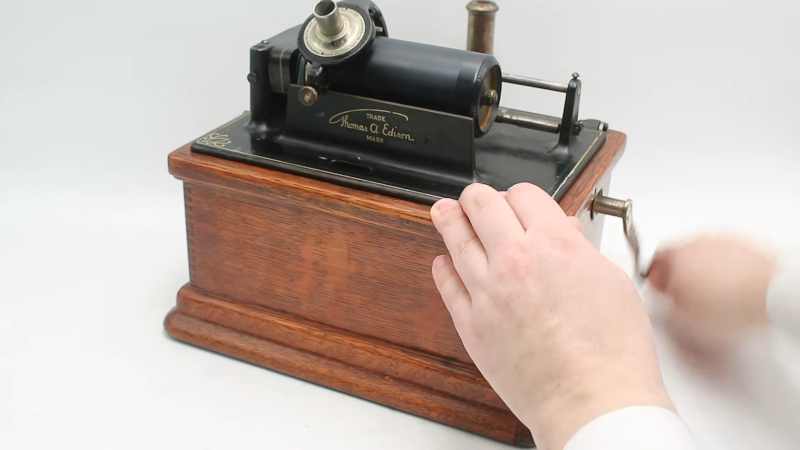If you think of records as platters, you are of a certain age. If you don’t remember records at all, you are even younger. But there was a time when audio records were not flat — they were drums, which was how the original Edison phonograph worked. [Our Own Devices] did a video earlier showing one of these devices, but since it was in a museum, he didn’t get to open it up. Lucky for us, he now has one of his own, and we get to see inside in the video below.
Ironically, Edison was deaf yet still invented the phonograph. While he did create the working phonograph — his self-identified most important invention — the original invention wasn’t commercially viable. You could record and playback audio on tin foil wrapped around a drum. But you couldn’t remove the foil without destroying it.
Edison was busy, but another inventor related to Bell created a similar system that used wax cylinders instead of foil. Edison’s vision for his invention didn’t include popular music, which hurt sales.
If you want to skip the history lesson — although it is well worth watching — you can skip to the 9-minute mark. You can hear the machine play and then see the box come off.
Oddly, people were recording things before they were able to play them back. Keeping a machine like this running can be quite a challenge.
















They have and operate one of these at Greenfield Village, in Detroit, where the original Edison labs have been moved to. I didn’t watch the video, but the Greenfield Village recordings both record and play back with the same unit. The docents say that it’s the only one remaining that is actively demonstrated for the public.
LOOK AT THIS PHONOGRAPH
EVERY TIME I DO IT MAKES ME LAUGH
I have one of these, together with a dozen or so original Edison branded records. I don’t have the original horn, but my grandfather fabricated a replacement (I inherited it from him). It’s great fun, especially when paired with a wind up gramophone playing 78’s at a picnic.
I’m not sure if the phonograph was Edison’s most important invention: he was also the co-inventor of the electric light bulb (Joseph Swan came up with it at the same time, and they eventually went into partnership.) As the first indoor light which didn’t require combustion, it must have saved countless lives. Read a bit about how often theatres used to burn down before they had electric light…
Well in the video it’s mentioned that Edison himself considered the phonograph his most important invention, if it was or not, that’s debatable.
The electric light was only improved by Edison. Phonograph was brand new invention, kind of magic.
12:30 mark to actually hear the recording. He spends far too long speaking about esoteric facts around the reproducer.
A discussion of history in a video about history? Well I never!
Well odd to suggest 9 minutes to listen to music that starts 3 and a half minutes later.
People rag on tiktok and shorts but it does hit my brain dopamine just right.
We’ve got a later 78 machine due for restoration. The traditional grease they used inside the mainspring housing is apparently a mixture of petroleum jelly and powdered graphite, which I’m sure was very slippery 100+ years ago but has become rather sticky in the modern era.
In the early 80’s Purdue salvage had Edison dictation machines. They had foot control and a different lead screw than the music players did so they couldn’t play music cylinders. So they were in use somewhere up until then?
I have a horn speaker from an Edison phonograph. I find it significantly more interesting than the phonograph itself. The development of those speakers and their ability to passively amplify sound is a delightful study. More so now that we’re often listening to the tiny speakers built into our phones. The Edison horn speaker was a marvel of simplicity and design. More there than meets the eye.
One of the coolest things I’ve seen on hackaday!!!
I have a Standard model that plays 2 minute wax cylinders. I rebuilt the motor about 30 years ago and it works well and plays quite loudly.
In the video, at 9:46 they show someone putting a cylinder on a player holding it on the grooves! Ugh! The proper way to do it is hold the cylinder with two fingers only on the inside of the cylinder.
The player in the video appears to be missing the brake lever that stops the cylinder from spinning while you wind the spring. The open slot in the top of the player is where the lever would protrude.